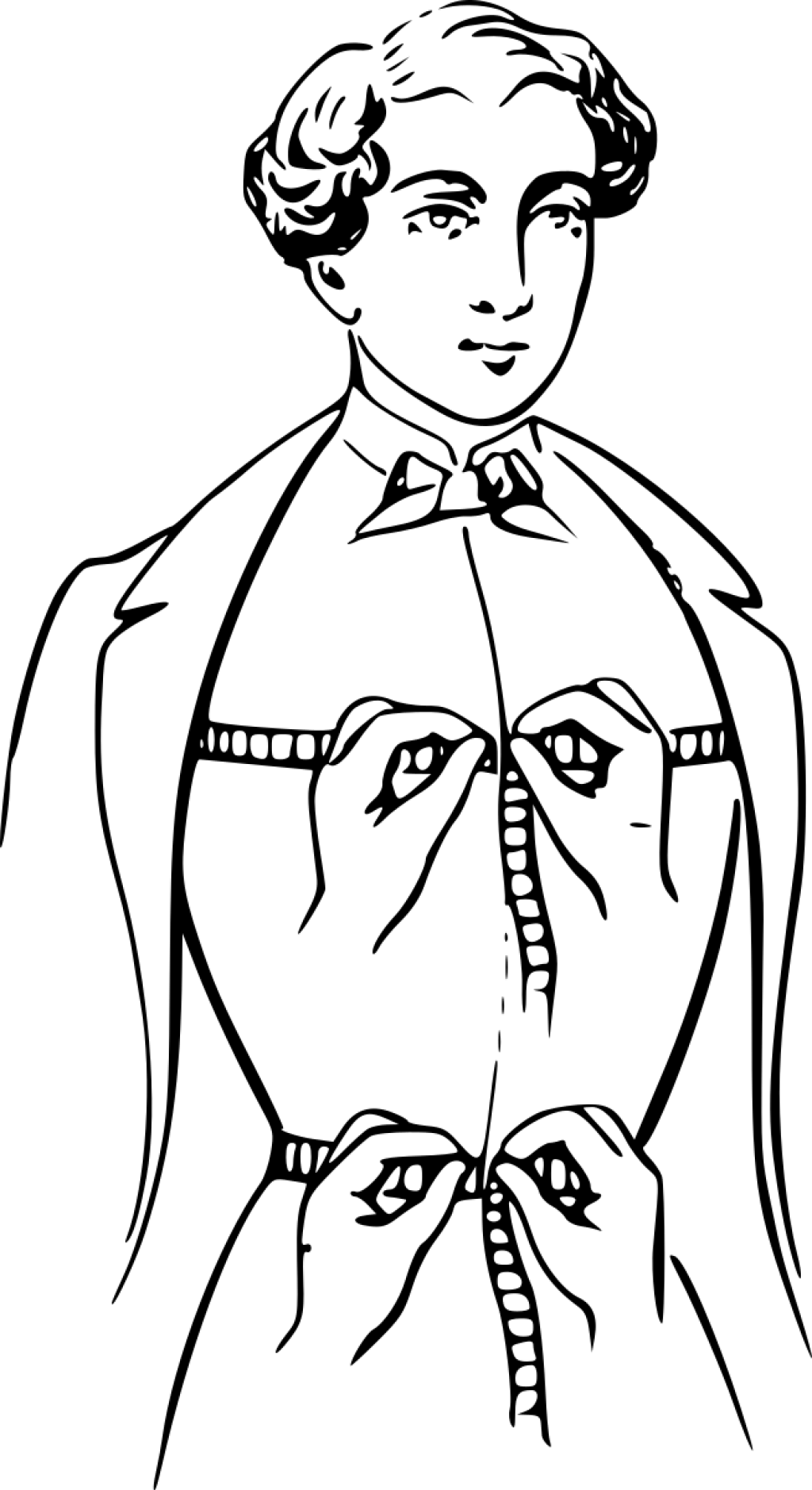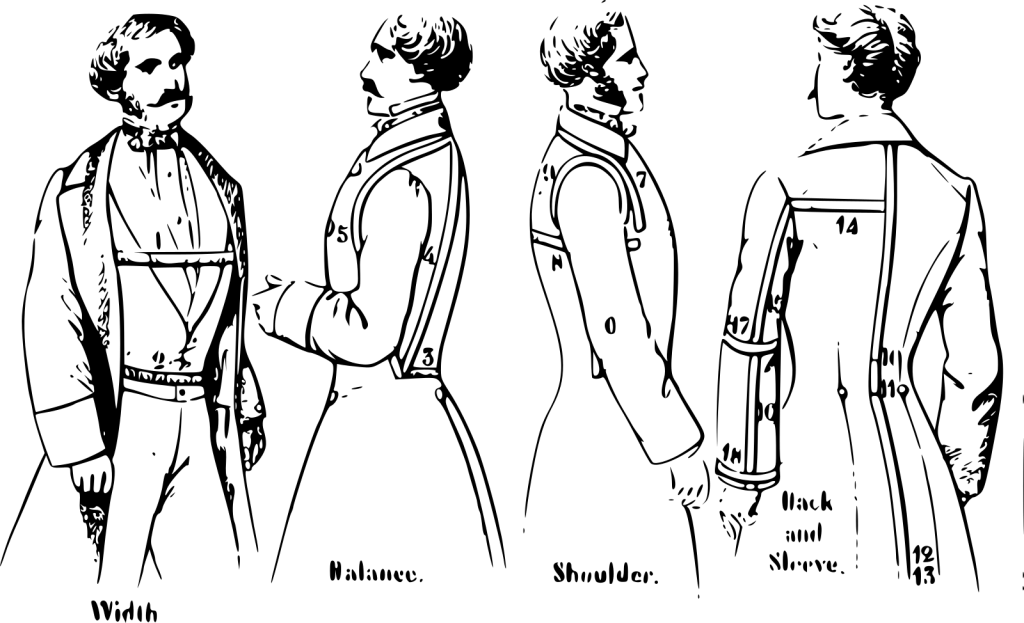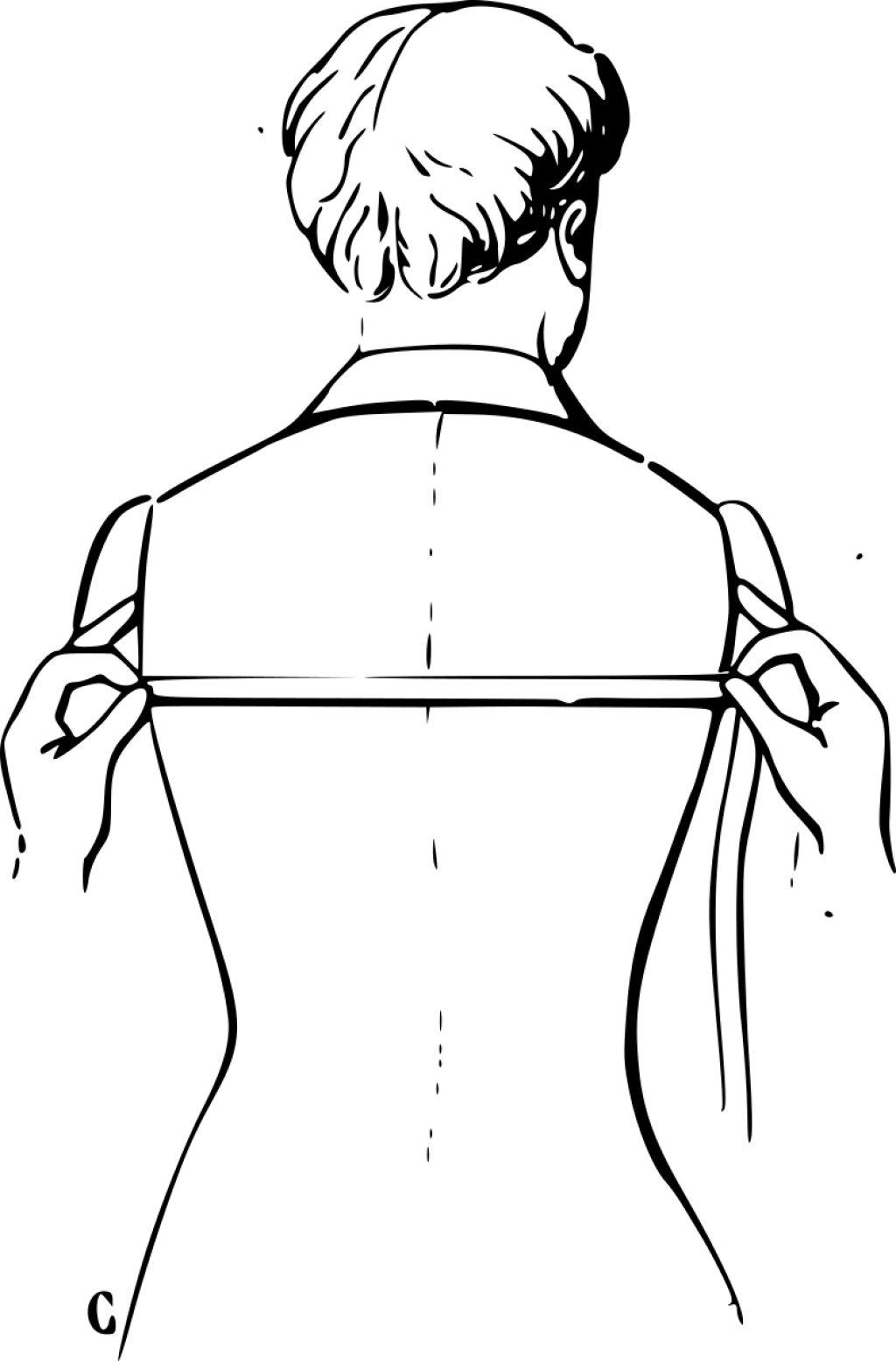All measurements should be taken over what you will wear underneath this coat, if possible. That’d mean a period shirt, trousers, and waistcoat if you have them. If not, I’d recommend adding maybe an inch to your measurements if just measuring over a regular shirt, for example.
A good idea for beginners is to tie a length of twine or ribbon around the natural waist so that all of your measurements are referenced from the same points. This should be tied around the waist at about the level of the naval.
While it’s possible to measure yourself – I do it all the time – for beginners I’d recommend having someone measure you if you can.
And in general, try to keep your body relaxed in its natural position when taking the measurements. Don’t try to stand extra erect like a dashing officer if you don’t stand like that in real life, for example.
With that all said, on to the measurements!
Measurements
There are a number of measurements you’ll need to take for your coat. I’ve included a chart in which you can right them all down for convenience. Listed out, you’ll need the following measurements:
Chest
Waist
Length of Back to Waist
Total Length of Coat
Width of Back
Sleeve
Sleeve + Back
Chest
This is the most important measurement and determines which size of your coat. Measure around your chest at the fullest point, just under the arms.

Waist
The waist measurement is taken at the level of the natural waist, about even with the naval.
Length of Back to Waist
Starting at the base of the collar, measure down the center of the back to the position you’d like the back hip buttons to be, usually a couple of inches below the natural waist. This is another check measurement to compare with the draft.
Total Length
Measuring down the center of the back, start at either the base of the collar or at the 7th vertebrae if you don’t have period clothing available (the bony part on the back of your neck). Measure from there, pressing the tape against the hollow of the back, down to the bottom of where you’d like the coat to be, usually two or three inches above the knee.

Width of Back
This is similar to the chest measurement, but taken straight across the back from armscye to armscye at a level just at the bottom of the armpit.

Sleeve
The sleeve can be a little troublesome to take, especially for a beginner, but it’s easy to fix during the fitting process if necessary.
To take the sleeve measurement, stand with your arm extended horizontally, and bend the elbow at 90 degrees. Measure from the armscye along the back of the sleeve, around the elbow, to just past the wrist (sleeves were longer in the 1860s than they are today).
You can also take the same measurement from the center of the back, that way you can compare the two measurements and look for any discrepancies. I’ve included a video demonstrating the two measurements.